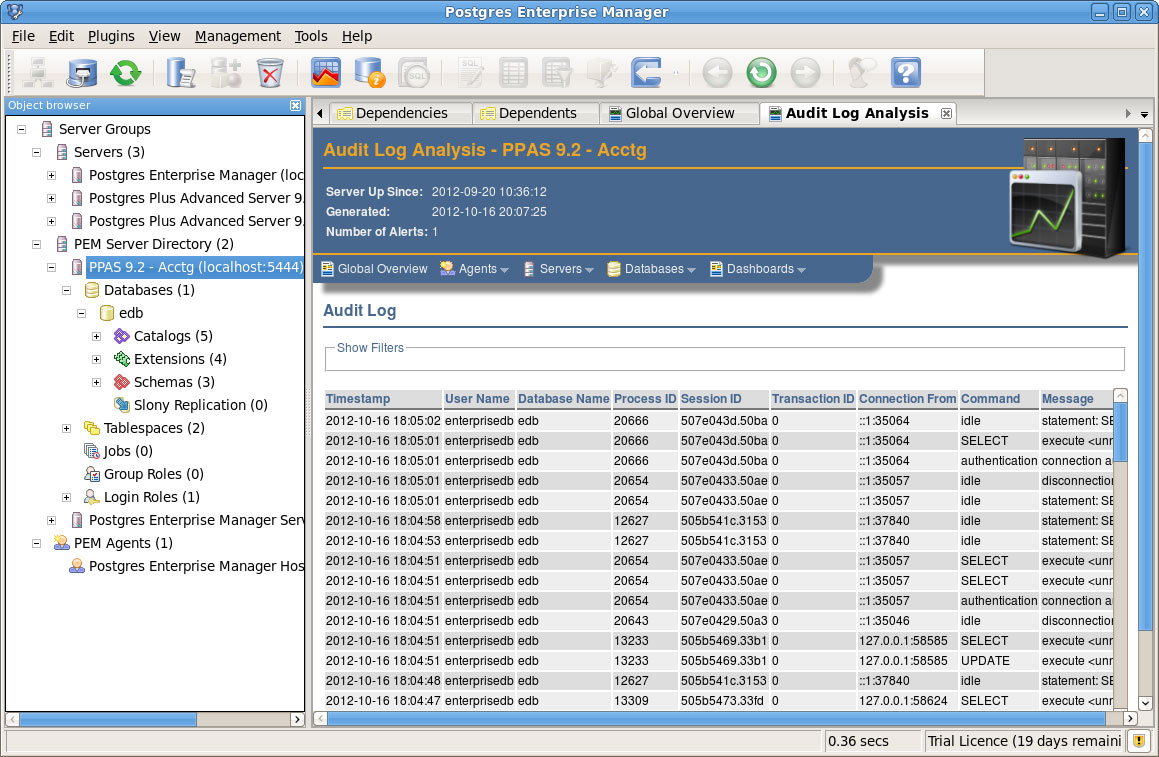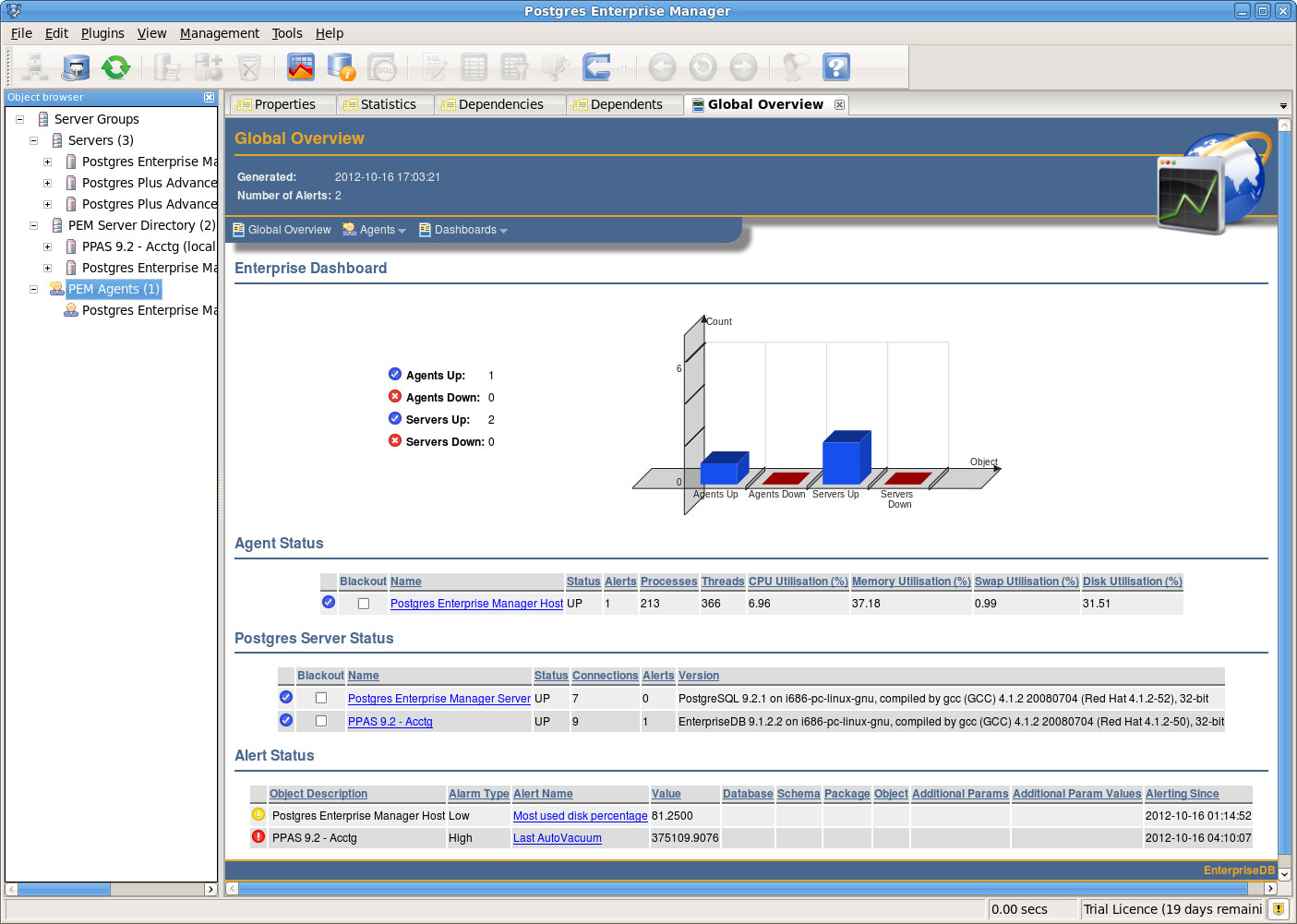Big Data Analytics
Enterprise Content Management
EnterpriseDB Disrupts Oracle's Hold on the Enterprise Database Market

Founded in 2004, EnterpriseDB has made it its mission to disrupt the strangle-hold that Oracle has on the enterprise database industry. Employing the latest in open source and PostgreSQL technology, they’re definitely making a difference in the enterprise space.
That’s why we spoke with Ed Boyajian, the President and CEO of EnterpriseDB. Coming from six years at Red Hat Inc., Ed is no stranger to the open source software industry; and he had a great deal to share with us not only about open source solutions, but also the pain-points that enterprises are currently experiencing in database solutions. For more about EnterpriseDB, visit their website here.
Open-source software isn’t generally associated with enterprise level solutions, so can you tell me a little bit about EnterpriseDB’s approach to bringing open-source software to Enterprise?

WEBSITE: www.EnterpriseDB.com
FOUNDED: 2004
LOCATION: Bedford, MA
CUSTOMERS: IBM, Washington Times, Bioware, Vonage Inc.
Some of the names you’ve probably heard of who use Postgres are Instagram, who was recently purchased by Facebook; Skype, who was recently purchased by Microsoft. They’re two really high-profile brand names that people have heard of that are both big Postgres users. Some of our customers, NTT and KT – NTT is Nippon Telephone and Telegraph, the largest telco in Japan; KT used to be known as Korea Telecom. It’s also telco in Korea, in the top 400 biggest companies in the world. And then, beyond that, some of the world’s leading banks, trading companies, telcos, governments all use Postgres Plus from EnterpriseDB in mission-critical settings.
From our point of view, Postgres has come a long way in Enterprise deployment, not unlike Linux in that context; but to achieve that level of adoption and deployment, we added a variety of things to the core of what the community delivers with the technology that I think makes it more appealing to Enterprise class users. We take the technology, we test, we certify, and we ensure that customers get a product and a technology that meets the standards of Enterprise class deployment.
In addition to that, we make some enhancements for usability, manageability, performance, and compatibility. So we’ve got a great open-source technology from a really reliable community that we take and add a layer of engineering discipline. Behind that, we bring a full 24/7 global support organization that provides the support Enterprise’s need. So from my point of view, we’ve come a long way to bringing Postgres into the enterprise.
On that subject, what makes EnterpriseDB stand out from other database solutions? For people who might not necessarily know, what defines Postgres as opposed to MySQL?
I think, far and away, the most important thing that we bring to the table is we are the clear price performance leader in the relational database market today by a wide margin. In Postgres, we find a relational database that’s built in the image of an Oracle database. So many of the capabilities of technologies and features that you’d find in a class of a database like Oracle, you find in Postgres, unlike MySQL, where the design spectrum of MySQL was always around a different kind of class of workload. It was really focused on kind of a web application. It’s a great lightweight database for lightweight apps on the web.
But for Enterprise class workloads where people have historically pictorial DB2 from IBM or Sequel Server from Microsoft, we’re now seeing an emergence of Postgres as the standard bearer for open source as the alternative. It takes a company like EnterpriseDB to package that and bring it to market to make it all move in the enterprise.
EnterpriseDB states that the mission is to disrupt the database oligopoly that Oracle has. So what did you see as the hardest part about breaking into that market and disrupting the space?
When you look at Oracle, they have a stranglehold on their customers that’s existed for so long. Their business and their relationship with customers has become an institution. I think, to a large extent, what we know is that customers aren’t happy. They love Oracle technology, but they’re absolutely unhappy with Oracle prices. They’re unhappy with Oracle lock-in policies that minimize their ability to change or to move, and it’s so deep-rooted that it’s challenging for users and buyers to see a way clear of that lock in. So we have to do a lot of education and develop a higher awareness of what’s available as an alternative.
You know, we’re not the only ones who fight that fight, believe it or not. Microsoft does a great job of fighting that fight. I think more and more IBM also is doing a good job fighting that fight, because customers are tired of that lock in and the extraordinary amount of money they pay to Oracle.
I know we touched on this somewhat already, but what is EnterpriseDB’s approach for ensuring that you deliver a superior product to your customers?
It starts with the discipline, engineering model where we ensure the products that we ship to customers are tested, certified, and fully supported. I think it also stems from that core of engineering into the support and service organization that surrounds it to make sure a product can be implemented and deployed successfully – whether we do that with training or services – and then extending to availability of high-quality, world class, around-the-world support for the technology. People can get us whenever they need us for help or support with the product; they always have a staff of database experts to call and help them.
Aside from the kind of vendor lock in that Oracle has with its customers, what do you think are the major challenges that you see companies dealing with? And how do you think enterprise level database solutions can overcome those challenges?
There are probably two really big ones. The first one is entirely related to budget and cost. As you look inside the enterprise – and I think there’s some work Forrester did in some analysis on this corporate IT spend – the database budget may be as much as 30 percent of the total spend for companies, and I think that’s just an extraordinary number. So I think cost is far and away the biggest burden and obstacle that companies face today. I think technologies like Postgres plus that we deliver revealed that for many of the workloads and for many of the classes of applications, you just don’t have to spend the premium prices on Oracle that you spend today. I think that’s first amongst some of the challenges.
I think the second relates to the business needs that we see organizations having. As information is grown inside most enterprises, the demand for better use of all that data and information has grown with it. So the topic of big data and analytics has grown dramatically in the past few years in parallel with the growth and data. Companies have to come up with new strategies now and new software technologies to address those new business requirements inside and around that data. To fund that, they have to come out of their budgets with either net new money that wasn’t in the budget before because it’s a new need, or they have to find ways to save in the other areas of their P&L where they typically have spent the high premium dollars.
The first place to look comes back to what I said before in that relational database bucket where they’re writing the long check to Oracle. We found a lot of customers who now use savings in that area as a mechanism to fund the direction and strategies that they need to follow around new data and big data and analytic insights that they have.
On a somewhat related subject, what is the ideal customer for EnterpriseDB and what do they look like?
If I look across our customer base, we have great strength in companies that are over a half a billion dollars. Frankly, we see half a billion to a billion dollars or more in annual revenue, and in particular in segments and categories where there’s a lot of price pressure on margins. We see that in the areas of financial services, in the area of telco, and we see it in government. What I think is common amongst them is large-scale use of databases. They’re prolific across their operations; they have extraordinary amounts of cost pressure that relates to pure budget constraints.
The other area would be where transactional volumes and the transactional nature of the business drives margins really low, and you certainly see that in the financial service market, whether that’s banking or insurance. You certainly see that in the telco market where there’s fierce competition for customers, but they have big volume and big back end systems and big volume of transactions to support. In those cases, the incremental spend on high-price solutions is burdensome, so we’ve done quite well in categories like that at a scale.
Taking a more high-level view, where do you see the industry headed in the next five years? Do you anticipate any shifts in the landscape?
We’re already starting to see much more ubiquity in the open source space, and there will be much more ubiquity in terms of the use of open source solutions across the enterprise. We’ve certainly seen this in the patterns of adoption of Linux now extends broadly across really every server class and workload area. I think we’ll start to see the same kind of penetration in particular with databases. I think because databases are such a ubiquitous technology in all enterprises, we’re going to see more and more use of open-source databases across enterprise.
If you look back four or five years ago, the biggest software companies in the world had very little to do – save for IBM who was participating in the Linux movement – with open-source technology. Today, that landscape’s changed dramatically. So I think that we’ll see open-source solutions living alongside traditional proprietary solutions that are coming directly from those big vendors. I’ll give you a couple of examples. Look at companies like Microsoft and their recent work, which is the open-source Apache project. I think that’s a great example of how a traditionally viewed proprietary software company is recognizing the power of open-source technologies to benefit their customers.
Maybe not surprising, you see companies in the SaaS world like Salesforce.com where, through their Heroku platform as a service, a huge use of Postgres is actually the underlying database infrastructure. And obviously, we’ve seen IBM in the space with Linux. I think IBM will continue to do more with open source. You see some of the new guys coming out–Citrix has done great work with XenSource and now with CloudStack, which is the open source project for infrastructure and service.
Who do you think are the most interesting companies in open source right now and why?
I think it’s really interesting first and foremost that you see bigger companies, such as the top three, four, or five top software companies in the world, embracing open-source projects and open-source technology. So I named some of those already. I think they’re great examples. That, to me, is the most interesting.
To drop a level below that, I’m really interested in the development and the pace of the change in the cloud world. I think that the two projects that I find most intriguing in that regard are CloudStack, which is work that came out of Cloud.com that Citrix acquired; and Citrix is a big proponent of CloudStack. Then, the OpenStack project, which started through some work at Rackspace with the government, but that’s now supported by many other enterprises. I think both of those are really interesting technologies. Obviously, I think in the area of data management that Hadoop is a particularly intriguing technology and generating a lot of support around the market. A company that we pay a lot of attention to is Hortonworks, who seems to be doing some great, great things with Hadoop.
My final question is what makes you the most excited about what EnterpriseDB is doing?
I think we’re in the first inning of truly transforming a segment. You can call it disruption. You can call it transformation. You can name it however you want. But just like Linux before us, we’re rewriting the history of the traditional relational database market, as we speak. I think we’re at the very front end of that transformation; and that, to me, is a thrilling ride for us to be on.
Want more on database management technology? Take a look at Business-Software.com’s Top 5 Enterprise Data Storage Solutions report.








